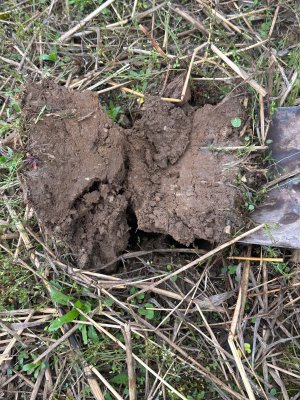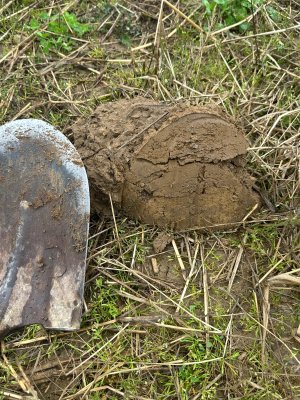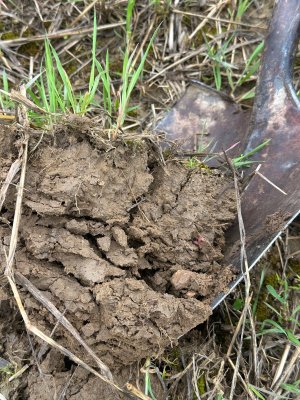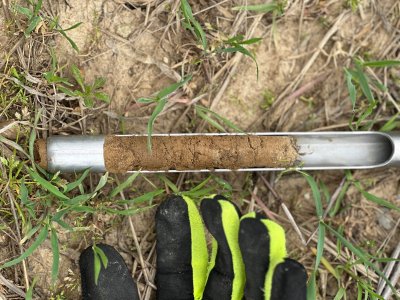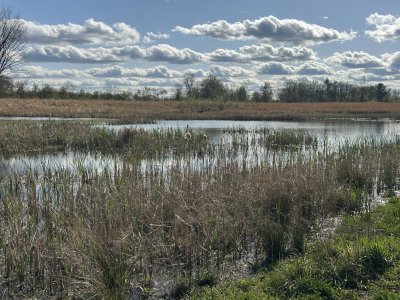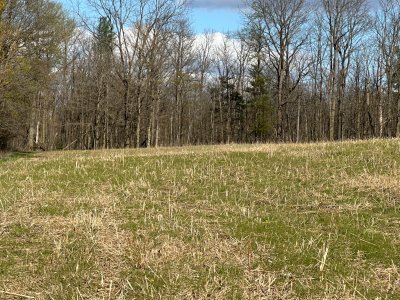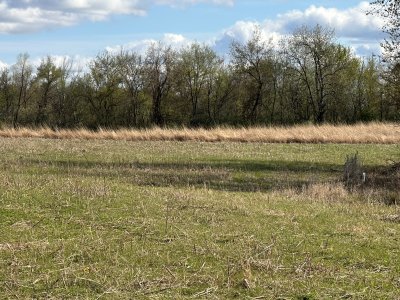farmlegend
5 year old buck +
I’ve seen a number of pics of soils with the “chocolate cake” appearance, evidence of well-aggregated dirt with healthy microbial activity, mychorrhizal fungi, root exudates and all.
This project of mine, covering nine acres of ground, began with long-term heavily tilled rowcrop ground. I’m trying to make it healthy, living dirt. After three seasons of multi-species cover crops, the going is slow.
Pulled dirt for some soil tests yesterday. Ground is still very compacted, and in many spots I couldn’t get the probe to sink in, even with all 151 pounds of weight on it.
On a positive note, infiltration seems to be somewhat improved, there is less ponding out there, and I did find a couple earthworms.
Here’s to year four of the project.
This project of mine, covering nine acres of ground, began with long-term heavily tilled rowcrop ground. I’m trying to make it healthy, living dirt. After three seasons of multi-species cover crops, the going is slow.
Pulled dirt for some soil tests yesterday. Ground is still very compacted, and in many spots I couldn’t get the probe to sink in, even with all 151 pounds of weight on it.
On a positive note, infiltration seems to be somewhat improved, there is less ponding out there, and I did find a couple earthworms.
Here’s to year four of the project.


